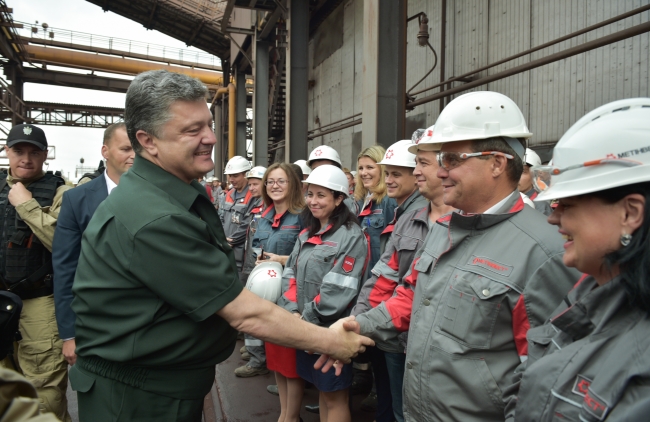
Inaction by US and NATO to Russia’s August Incursion Showed Putin He Could Invade Ukraine
History books to be written about the Ukraine crisis and the Battle for Donbas will likely record as a military turning point the battle on September 5 for the town of Ilovaisk. A massive, pinpoint-accurate artillery barrage, using high-tech reconnaissance and targeting, killed hundreds of the Ukrainian troops who had been closing in on nearby Donetsk, the headquarters of the Russian-backed rebellion. That precisely guided rain of shell and rocket fire shattered Ukraine’s offensive, and was beyond the capability of the ill-trained, informal militias of the self-proclaimed “Donetsk People’s Republic.” It is probably beyond the realm of any doubt that this assault was part of Russia’s direct military intervention in Ukraine.
The real – that is, strategic – turning point in the war for Donbas came in mid-August, amid the media frenzy around Russia’s dispatch of a “humanitarian aid” convoy into the war zone over Ukraine’s objections. That event appeared to mask what already had been fairly clear: that mass Russian troop formations were entering Ukraine and the war. Remember that correspondents for the Guardian and the Telegraph witnessed Russian armored vehicles and military trucks driving openly across Ukraine’s border on August 14, into the zone held by Russia’s proxy forces. The fact that the US and the West did nothing at that point in response to the finally undeniable evidence of Russian troops invading Ukraine was effectively President Vladimir Putin’s call of the West’s bluff. It showed that the West and NATO would not ride to Ukraine’s defense, no matter what Russia might do in Ukraine.
Within three weeks, thousands of Russian troops were in Ukraine (according to such diverse sources as NATO, the Donetsk rebel leader Aleksander Zakharchenko, and Russia’s Soldiers’ Mothers Committee). Russia’s role in the devastating defeat of Ukrainian forces at Ilovaisk made clear to President Poroshenko that a speedy military victory in Donbas was beyond reach. Russia had shown it would “go all the way” in Ukraine, while the West had shown it was unwilling to do very much (even to impose further sanctions on Russia over its now proven military intervention).
Ukraine’s Only Hope: Ukrainians
Perhaps Poroshenko will view Ilovaisk as his Dunkirk – an opportunity to regroup and rebuild Ukrainian military forces for a longer struggle with Russia. And like Britain in World War II, he may be assuming that Ukraine will have to pretty much stand alone.
Poroshenko’s only hope is that Ukraine’s population rallies as the British did in the early 1940s. His immediate goal presumably will be to get through October and Ukraine’s parliamentary elections, which are likely to strengthen his own party and others that reflect Ukraine’s growing national consensus for a more staunch independence from Russia. Such a vote would be a huge political defeat for Russia and Putin, and a possible incentive to prevent the election from taking place, by whatever means.
Let’s see Russia’s next step. The Kremlin already has had plenty of opportunities for a full-blown invasion – following its February seizure of Crimea, and more recently after the battle for Ilovaisk, and surrounding the drive to Mariupol. Putin has held back, presumably because of the huge risks: Ukrainians have proven that they will fight, and hard. For now, the “frozen conflict“ he already has achieved in Donbas probably gives him sufficient leverage to let him wait and see if that can achieve his essential goals for Ukraine’s future: No NATO, No EU, and No Maidan.
Timothy Ash is head of emerging market research for Standard Bank in London
Image: President Petro Poroshenko greets steelworkers Monday in the Donetsk province port of Mariupol. Poroshenko accepted a truce with Russia in the war in Donetsk after the West failed to respond to proof in August of Russia's invasion, analyst Timothy Ash writes. (Ukraine presidential office/ www.president.gov.ua/en)
